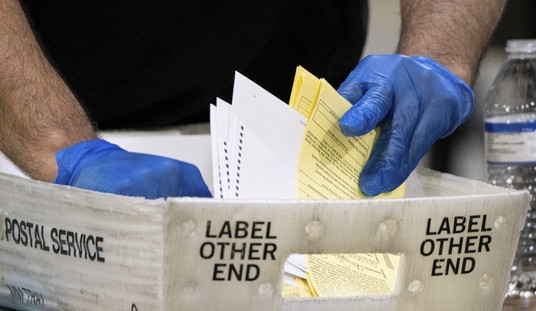=========
=========
Promoted from the diaries by streiff. Promotion does not imply endorsement.
=========
=========
By: H. Sterling Burnett
Politicians everywhere should have to take a version of the Hippocratic Oath, swearing the laws they enact to solve problems won’t make the situation worse—for instance, by increasing costs in exchange for doing nothing more than limiting freedom of choice.
Politicians in Maine should be the first to adopt this new pledge. In response to complaints about high prices and poor service, they have repeatedly meddled in the state’s highly regulated power market by adding new requirements and mandates, increasing energy costs and undermining reliability.
Maine’s electric power supply is an overregulated oligopoly. In return for a guaranteed minimum -amount of supply and reliability, the limited number of investor owned utilities Maine has licensed to operate in the state are basically guaranteed a set profit on new facilities they build and for operations and maintenance. Lacking competition, they have little reason to innovate, let alone offer new supplies or services. Even worse, as costs increase, profits decline, or new demands are impose on them, they ask state regulators to approve rate hikes, which are almost always granted, to some degree.
In Texas, by contrast, after retail competition was permitted, electric utilities were forced to compete, leading them to offer a variety of innovative technological options, billing programs, services, and power sources. The result? Electric prices declined, supply remained steady even as population and the economy boomed, and customers now have several supply options.
Where I live, for example, I have 10 different retail electric providers vying for my business, offering 59 different electric power plans. As a result, I pay less now for electricity than I did five or even 10 years ago. My service is just as reliable as always, and my interactions with customer service personnel at my utility are better than ever.
Based on news reports and testimony in legislative hearings, the same cannot be said for Maine. Each step Maine’s legislature has taken to “fix” reported problems has only made them worse. Ironically, utilities are getting blamed for worsening conditions created by government intervention.
The U.S. Energy Information Administration (EIA) reports, as of January 2019, Maine’s average retail electric power prices were 13.02 cents per kilowatt/hour (kWh), 24 percent higher than the average for the nation and 55 percent higher than in Texas.
The reasons for the much higher—and, indeed, regularly rising—electric prices in Maine are not hard to understand. Just look at what the legislature has done over the past two decades.
In 2003, Maine’s governor collaborated with the governors of eight other northeastern states to create what would become the Regional Greenhouse Gas Initiative (RGGI), to reduce carbon dioxide emissions. The plan was formalized, and by 2007, Maine and nine other states began limiting their greenhouse gas emissions by restricting the use of low-cost fossil fuels to generate electricity to fight climate change. Adding insult to injury, also in 2007 Maine imposed a renewable energy mandate (REM) on utilities in the state requiring them to increase new renewable power supplied to the electric grid 1 percent each year until it reached 10 percent by 2017.
Even if one believes human greenhouse gas emissions are causing some degree of climate change, because greenhouse gases from the northeastern United States account for so small a percentage of world emissions, the RGGI’s reductions and Maine’s REM will have no impact on climate change—now or ever.
RGGI did, however, have a big impact on energy costs throughout the region. Every state in RGGI has electricity prices that are much higher than the national average. Indeed, Maine’s energy prices are among the lowest of the RGGI states only because much of its electric power comes from hydropower, the lowest cost, most reliable form of renewable energy. But that is changing, as the state is adding increasing amounts of wind and solar power to its electric power supply.
Research consistently shows as states impose or increase their renewable energy mandates, energy prices rise faster than in states without such requirements. For example, a University of Chicago study found, on average, seven years after REMs are enacted, renewables’ share of electricity generation increases by only 1.8 percent, but they cause retail electricity prices to rise by 11 percent. After 12 years, renewables’ share of generation rises to 4.2 percent, but prices rise by 17 percent. In total, states with REMs have cost their residents and businesses more $125.2 billion since they were enacted. And EIA data show, at approximately 11.93 cents kWh, electricity prices in 29 states (and the District of Columbia) with REMs are 26 percent higher than in states without REMs, at 9.38 cents kWh.
Having learned nothing from its past history of failure, some in the legislature are pushing for Maine to increase the percentage of energy utilities are required to supply from wind, solar, and, even more expensive, offshore wind. And the legislature, in its infinite wisdom, is considering legislation to combine the state’s two investor-owned electric utilities into a single, monopoly utility. Under this plan Central Maine Power and Emera Maine would be forced to sell their estimated $4 billion in assets to a new public utility, with the purchase financed by low-interest, tax-exempt bonds issued by the new state-backed utility. So now taxpayers as well as ratepayers would be gouged to pay for electricity.
Publicly owned monopolies are not known for great customer service, innovation, or low costs. Don’t believe me? Check out the history of service and reliability of power systems in countries in the Soviet bloc before the Iron Curtain fell, or even in Cuba and Venezuela today. Closer to home, in Texas,, municipal utilities were allowed to keep their monopolies within their service areas, and, lacking competition, ratepayers in these areas, prohibited from shopping in the energy marketplace for providers, pay more and get less on average. I know this to be the case because my mother, father, and cousins-in-law are served by a municipal utility and despite having much smaller residences than my own, they pay more for their power, and lack innovative technologies offered to me by my service provider as part of my contract. In those rare instances when public utilities do provide lower cost power, it is typically because taxpayers subsidize some of the costs of providing power through special fees, levies, property taxes, or through the issuance of bonds.
More government intervention in Maine’s energy marketplace won’t solve the cost and service problems created by previous government interventions. Maybe it’s time to adopt a different strategy: removing the many barriers to electric power competition, allowing new utilities and service providers to compete to provide Pine Tree State residents and businesses with electric power. Further, removing the shackles placed on present utilities in the state by Maine’s participation in RGGI and its REM would make the energy market more robust. All these moves would take legislative action, which most Mainers would likely support.
H. Sterling Burnett, Ph.D. ([email protected]) is a senior fellow on energy and the environment at The Heartland Institute, a nonpartisan, nonprofit research center headquartered in Arlington Heights, Illinois.













Join the conversation as a VIP Member